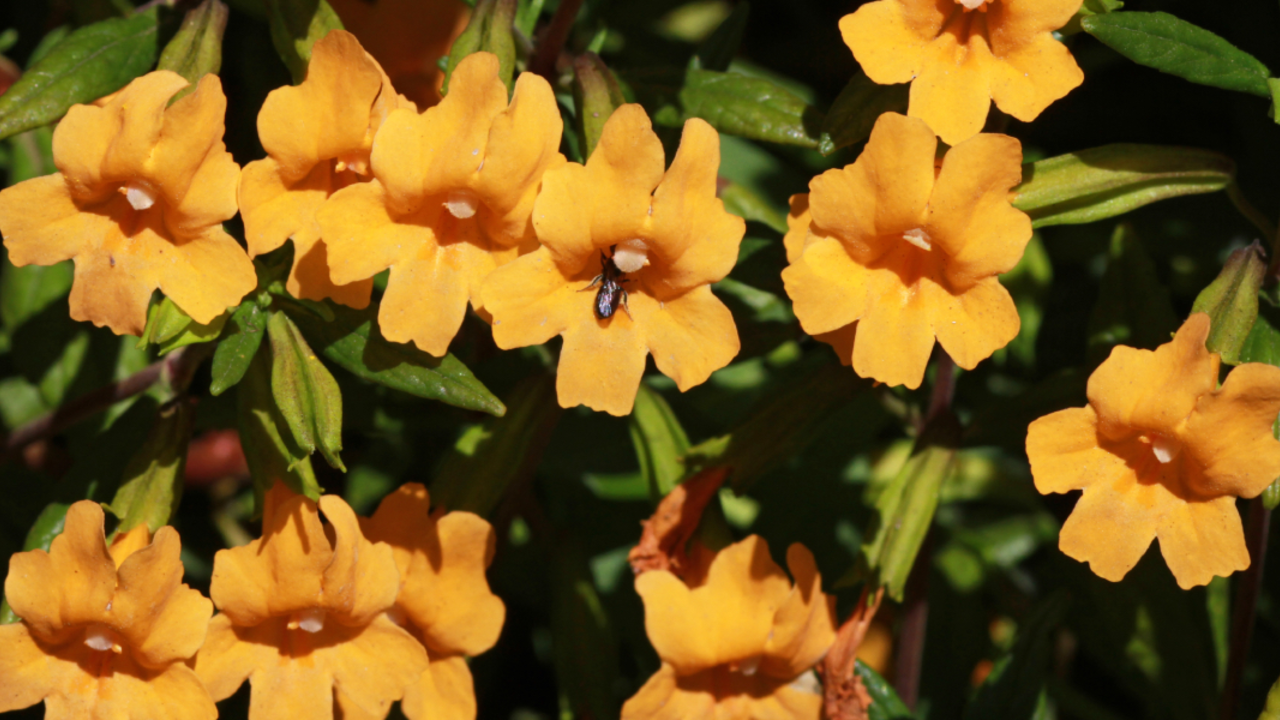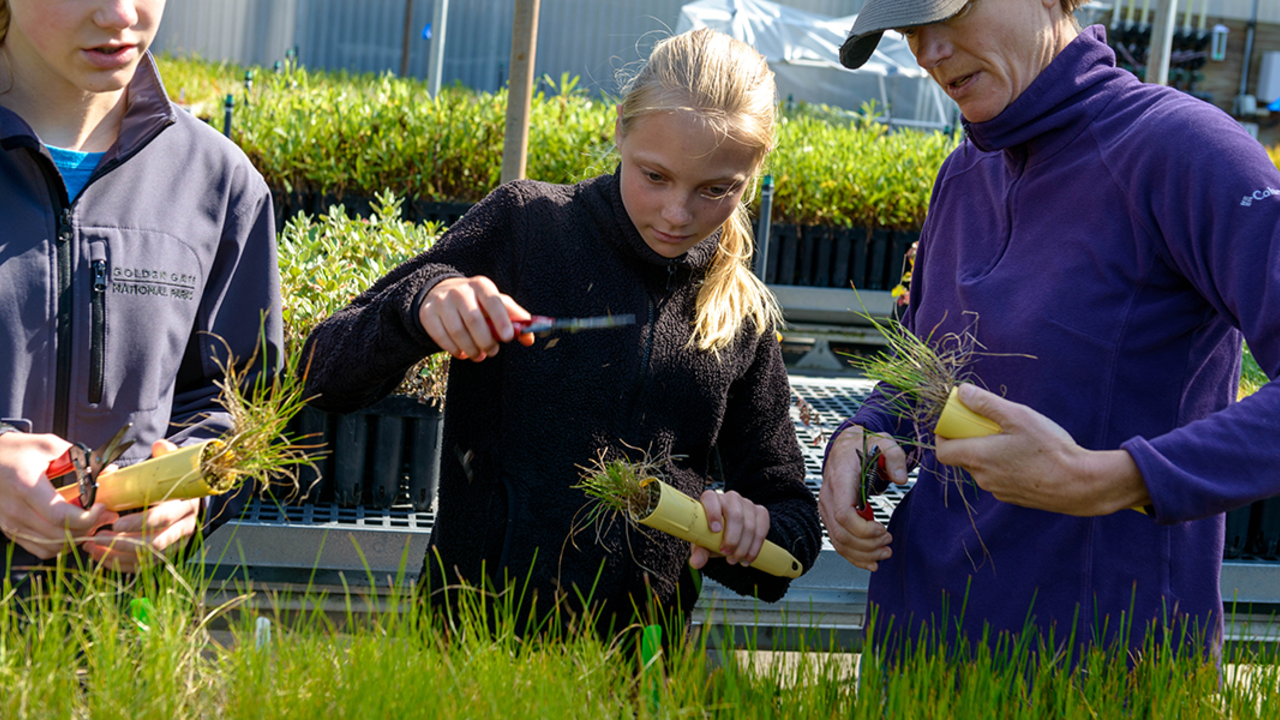Sticky Monkey-flower
(Mimulus aurantiacus)

Will Elder/Parks Conservancy
Endangered
No
Population
Common
Family
Scrophulariaceae, or snapdraggon family.
Description
First, the winter rains, turn the hills green. Next, in the spring, they turn purple with bush lupine, and then lizard tail brings yellow to the scene. A little later still, as you walk or drive through our coastal scrub, you can’t help but notice that hills are alive with the color orange, courtesy of the sticky monkey-flower (it’s almost as much fun to say as it is to look at). And who put the monkey in the monkey flower? Someone with quite an imagination. It seems the flowers are supposed to resemble a “laughing” monkey’s face.
The Scrophulariaceae family is very widely represented in California and includes Beeplant, Paintbrush, Snapdraggons and the exotic Foxglove. Members of this family share in common simple leaves, dry dehiscing fruit, and bisexual flowers with four epipetalous (fused-to-petal) stamens and a bilabiate (two-lipped) corolla (petals, collectively). The flowers actually have 4-5 petals, but they’re fused in such a way that the corolla appears to have two main divisions.
The sticky monkey-flower (Mimulus aurantiacus), or bush monkey-flower, grows in the scrub and chaparral from Mendocino to Baja. It’s one of three members of the genus Mimulus that you may encounter in the Golden Gate National Parks. The bright orange color of the flowers, sticky undersides of the leaves, and shrubby growth habit make sticky monkey-flower easy to distinguish from the red scarlet monkey-flower (M. cardinalis) and the yellow common, or seep-spring, monkey-flower (M. guttatus).
The stickiness of the leaves and sepals comes from glandular secretions. This resin, which makes up almost 30% of the leaf’s weight, helps to lessen the impact of an herbivorous threat: the larvae of specialist butterfly Euphydryas chalcedona. Resin production in the leaves fluctuates seasonally with the laying of butterfly eggs whose larvae are raised on the sticky monkey-flower plant. During the wet season, the larvae emerge and begin to feed on the nutritious spring leaves of the evergreen shrub. Nutrient levels as well as resin production in the leaves are high during this period of new growth. The resin that the larvae consume inhibits their growth, and protects the plant to some degree. In the early summer, the plant begins to allocate its energy towards flowering, away from the leaves, and the larvae stop feeding.
